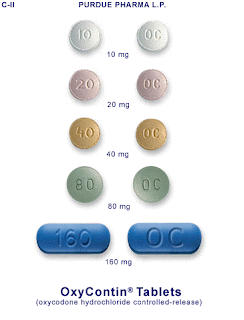Other analgesics, however, are powerful narcotics, and are available only with a prescription. Some common prescription analgesics include morphine and codeine, which are naturally occurring opiates; hydrocodone (Vicodin and Lortab) and oxycodone (OxyContin and Percocet), which are semi-synthetic opioids; and fully synthetic opioids, such as Fentanyl and Methadone. Under the close supervision of health care providers, these drugs can play an important part of a patient's pain management regimen.
Unfortunately, these drugs can also cause serious side effects, from nausea and constipation to respiratory arrest and even death. Additionally, due to their narcotic nature, there is a high propensity for addiction and abuse. Over-prescribing these drugs, or improperly supervising a patient's pain management regimen, can cause serious personal injuries and give rise to medical malpractice claims.
 Sometimes, careless physicians can transition patients from one narcotic painkiller to another, with disastrous consequences. For instance, Methadone is metabolized very slowly, and has a half-life of 15-60 hours. Additionally, it is fat soluble, and can remain in your system longer than other drugs. Likewise, OxyContin, a popular brand of oxycodone, is formulated to be released over time (the name is an abbreviation of Oxycodone Continuous release). When a patient is taken off of a "slow" drug and transitioned to a fast acting, instant release version, overdose can easily occur. The results of overdose can include respiratory arrest, anoxic brain injuries, or even wrongful death.
Sometimes, careless physicians can transition patients from one narcotic painkiller to another, with disastrous consequences. For instance, Methadone is metabolized very slowly, and has a half-life of 15-60 hours. Additionally, it is fat soluble, and can remain in your system longer than other drugs. Likewise, OxyContin, a popular brand of oxycodone, is formulated to be released over time (the name is an abbreviation of Oxycodone Continuous release). When a patient is taken off of a "slow" drug and transitioned to a fast acting, instant release version, overdose can easily occur. The results of overdose can include respiratory arrest, anoxic brain injuries, or even wrongful death.The Utah Medical Malpractice lawyers at G. Eric Nielson & Associates are experienced in handling medical malpractice cases involving narcotics and pharmaceuticals. We work closely with a team of pharmacologists, toxicologists, and medical doctors to determine whether patients have been injured by dangerous drugs, medical negligence, or pharmacist error. If you or someone you know has been injured because of addiction, overdose, or death, contact the attorneys at G. Eric Nielson & Associates for a free, no obligation consultation today.














